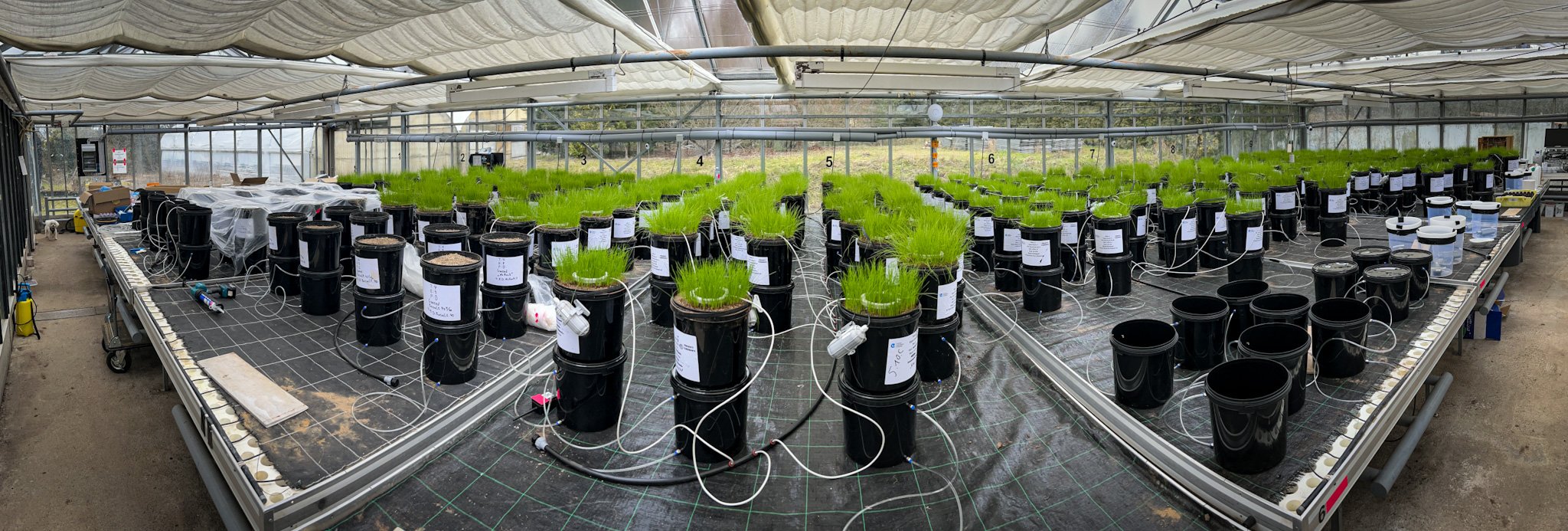In part one of our greenhouse data series we publish the biomass data from our greenhouse experiment (how much has biomass changed after adding rock dust to different soils?).
Read MoreWhy we use high frequency monitoring on a slow process and how we handle and analyze more than 4 million data points per day in real time
Read MoreWhile we are preparing a first look at the weathering data we have also looked at how the ambient climate in the greenhouse has developed since January. Here is an overview of this data.
Read MoreA photo diary of the things that happened in the greenhouse.
Read MoreDrawing from our experience, we hereby propose the concept of “scopes” to simplify the process. This concept is also used in the Greenhouse Gas Protocol standard to categorize greenhouse gas emissions. We'll apply this same idea to ERW.
Read MoreOur CEO held a conference session about our scientific work with measuring of enhanced rock weathering on croplands.
Read MoreAfter more than two years of ERW experiments we still fail to measure carbon dioxide removal with traditional chemical analyses and electronic soil sensors. But when we started to monitor CO₂ concentrations in soil gas we found a signal immediately!
Read MoreThe building process of our XXL Lysimeter project in May 2022 and the monitoring of the first 3 months was closely documented in a Master Thesis.
Read MoreA graph that shows the annual Carbon Cycle (carbon pools and carbon fluxes) for 1 m² of cropland including the Carbon Removal Effect of Enhanced Rock Weathering
Read MoreHow we built the Carbdown Greenhouse Experiment 2023, including the reasoning of the design, our shopping list and the building recipe.
Read MoreThis is how spreading 50.000 tons looks like! We have asked people from around the world that are doing enhanced weathering projects with basalt or other rocks to send us some photos and a short description of their work.
Read MoreOur pilot project with 1217 tons of basalt demonstrates the full value chain for ERW at € 230 per ton of CO₂ (with € 100-150 in sight)
Read MoreWhy do different ERW measurement approaches seem (?) to measure different amounts of CDR?
Read MoreA guest-blog-post by Dr. Ingrid Smet introducing her detailed report on all the do’s & don’ts, lightbulb & head scratch moments, behind-the-scenes information & preliminary conclusions from the first year of spreading 6 different olivine rich rock dusts (a total of 4500 kg) to a 2 hectare cotton field in Thessaly/Greece.
Read MoreWe will set up an extensive greenhouse experiment, our goal is to conduct experiments such that we can sample for all known ERW analytical approaches.
Read MoreOur new cheat sheet makes it possible to design early ERW pilot-projects today even without having those glitzy models of the future and before all those field tests have been done. Let’s start scaling now!
Read MoreWhile digging deeper into ERW every few months we encounter yet another rabbit hole moment when we come across another important parameter that influences the weathering activity and that needs attention.
Read MoreHow could spreading 40 t/ha work from a practical perspective? At Project Carbdown we have undertaken a few practical experiments over the last 2 years which we want to document in this blog post.
Read MoreMeasuring the weathering rates of basalt in “open nature” is very hard to do. To properly assess the weathering rates we need to measure this “in the field” as lab experiments are expected to show lower weathering rates which causes us to underestimate the carbon removal rates. Here is a short overview.
Read MoreBased on the results from last year’s enhanced weathering experiments on our field in Fürth we decided to build a new, improved experiment in 2022: The XXL Lysimeter Project. For this experiment we had to engineer and build 20 large lysimeters and put them into the field. This is a photo logbook of this process.
Read More




















